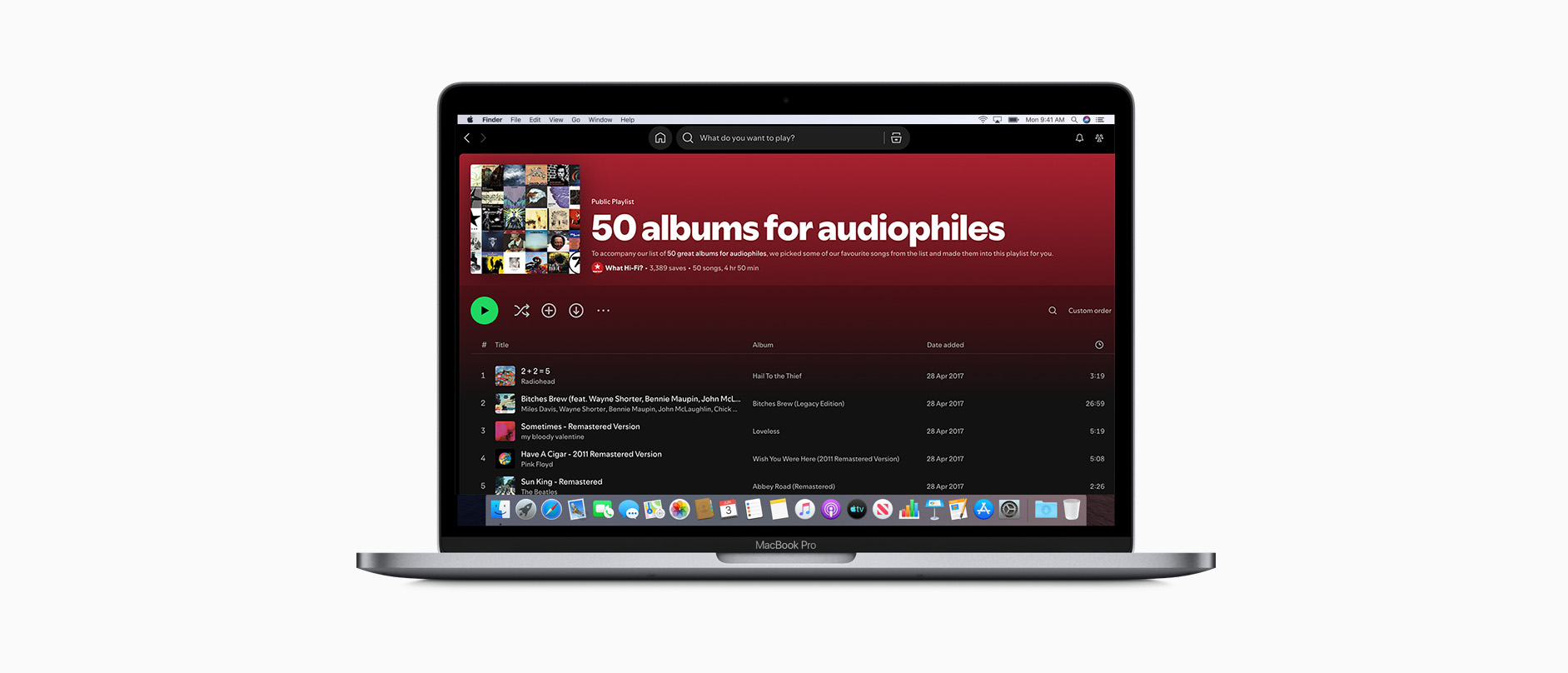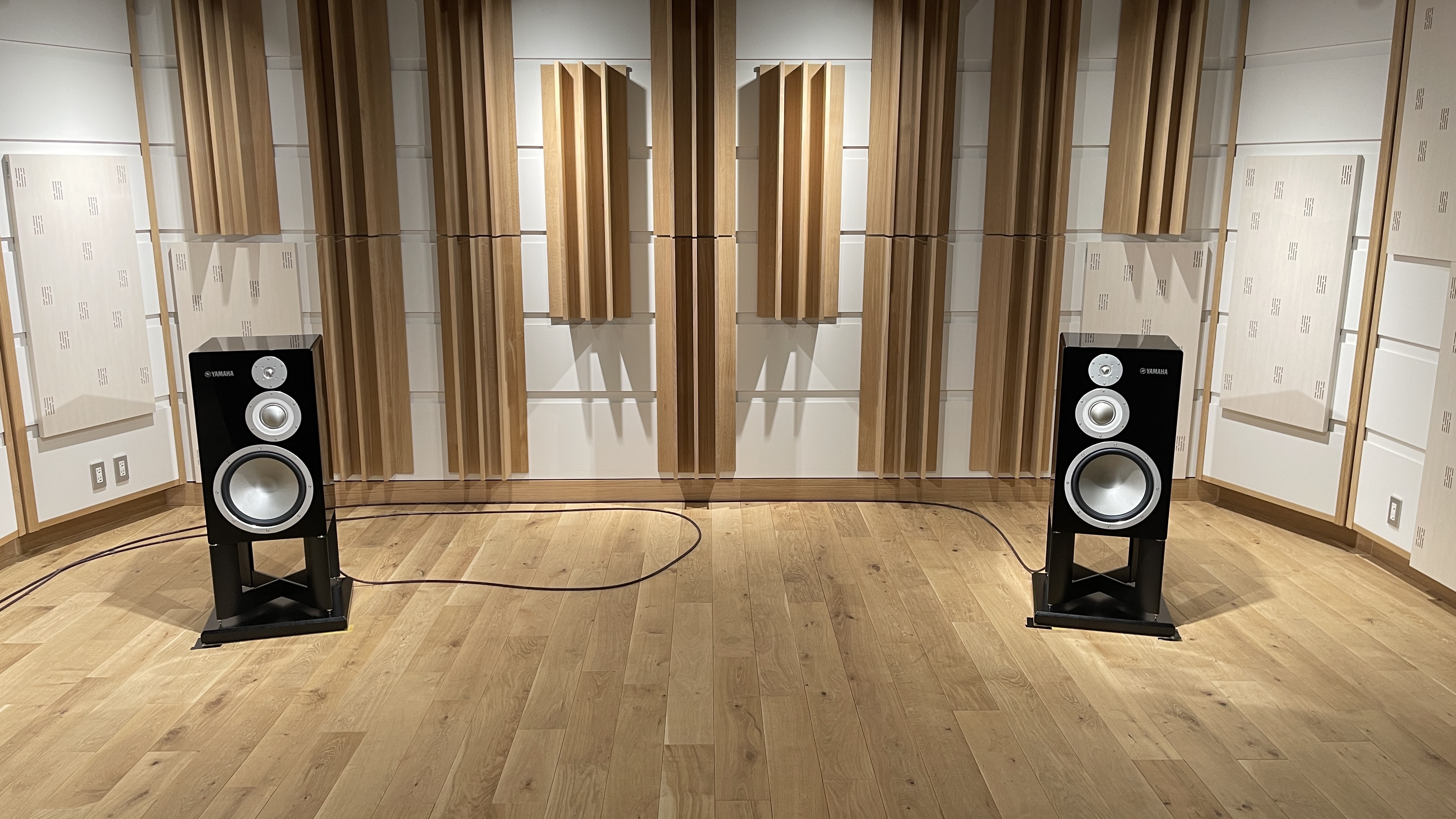What Hi-Fi? Verdict
Spotify remains popular for good reason, but audio quality advances by the competition have caused its crown to slip.
Pros
- +
Exhaustive discovery features
- +
Ubiquitous device support
- +
Free tier
Cons
- -
No lossless or hi-res quality (yet)
- -
Cheaper rivals sound better
- -
No spatial audio support may bother some
Why you can trust What Hi-Fi?
No one could suggest that Spotify reached its position of mainstream pre-eminence by accident. It’s the longest-running, most subscribed-to streaming service out there primarily because it offers the best user experience and is historically renowned for innovating through constant software developments and features.
Algorithm-led music discovery and personalised mixes are, for example, areas where the competition is made to look decidedly second-rate. Spotify has branched out into podcasts and audiobooks with great success, while its annual ‘Wrapped’ social campaign has become the talk of the town every December. Despite increased competition, Spotify remains true to its founding “music for everyone” ethos, too, by being one of the only services still offering a free tier alongside its paid-for Premium one.
But the latter is where Spotify’s biggest problem lies: Spotify Premium doesn’t offer hi-res (or even CD-quality ‘lossless’) audio quality and is now pricier than several services that do, including Apple Music, Amazon Music and Tidal. Spotify has for many years promised a higher-quality ‘Spotify Hi-Fi’ tier – CEO Daniel Ek says its development is still in “the early stages” – but for now consider it downright leapfrogged in the sound department. That isn’t its only glaring omission, either. So where does this all leave the green streaming giant? It’s time for a revisit…
Catalogue
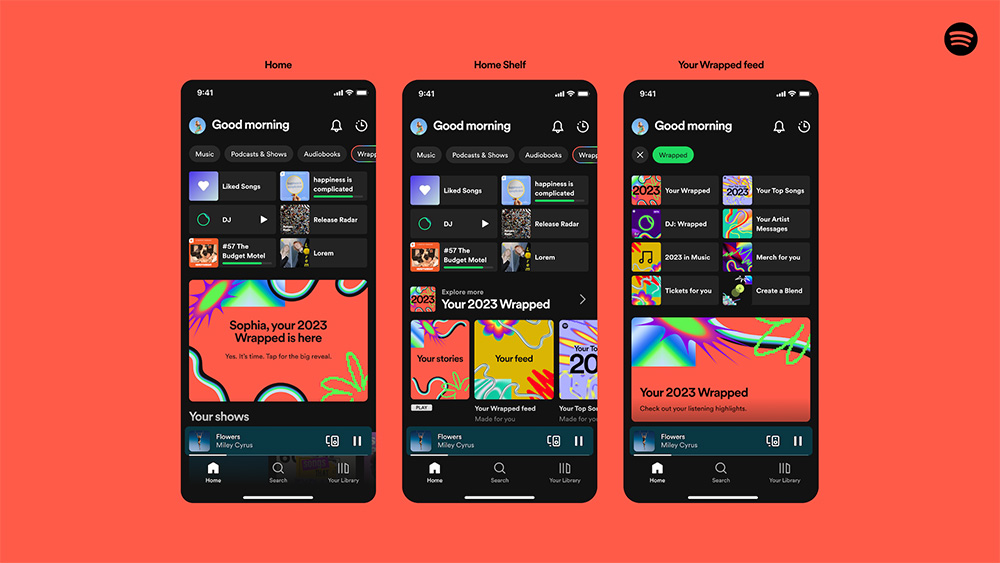
The immensity of Spotify’s catalogue has historically won the service points for being the world’s biggest. A decade ago its song library was 30-million strong, but today that figure is, according to Spotify, “more than 100 million tracks”. The gap between its library size and that of other mainstream services isn’t what it once was, though – Apple Music, Amazon Music and YouTube Music now also claim 100 million, while Tidal puts its catalogue at “110+ million tracks”. It’s really all a bit tit for tat nowadays, with the big services all delivering choice overload, and then some.
Spotify has more recently focused on podcasts for its content growth. Since the acquisition of podcasting production specialist Gimlet Media in 2019, “6 million podcasts titles” have been made available to stream and download on Spotify, including a raft of original content with big names such as Joe Rogan, Barack Obama, Alex Cooper and the Sussexes. Many hits were initially exclusive to Spotify, although recently the service has pivoted away from exclusivity to license them out to other platforms and grow ad revenue.
If such vast choice (again, overload) sounds overwhelming, there's a set of human-curated podcast playlists to help you find your new favourite shows ('Podcast Picks of the Week', 'Brain Snacks' and 'Crime Scene' are three) as well as the ‘Podcast Charts’. Paid subscribers can access most podcasts, but Spotify also has a podcast subscription service, similar to Apple's platform, where creators can choose to monetise their content with paid subscriptions.
As for audiobooks, you get – yep – lots of choice here too, with “over 250,000 audiobook titles” available to Premium subscribers and another 375,000 that any user can buy. Premium users get 15 hours of listening time with their plan, with additional time (in increments of 10 hours) costing extra.
Pricing
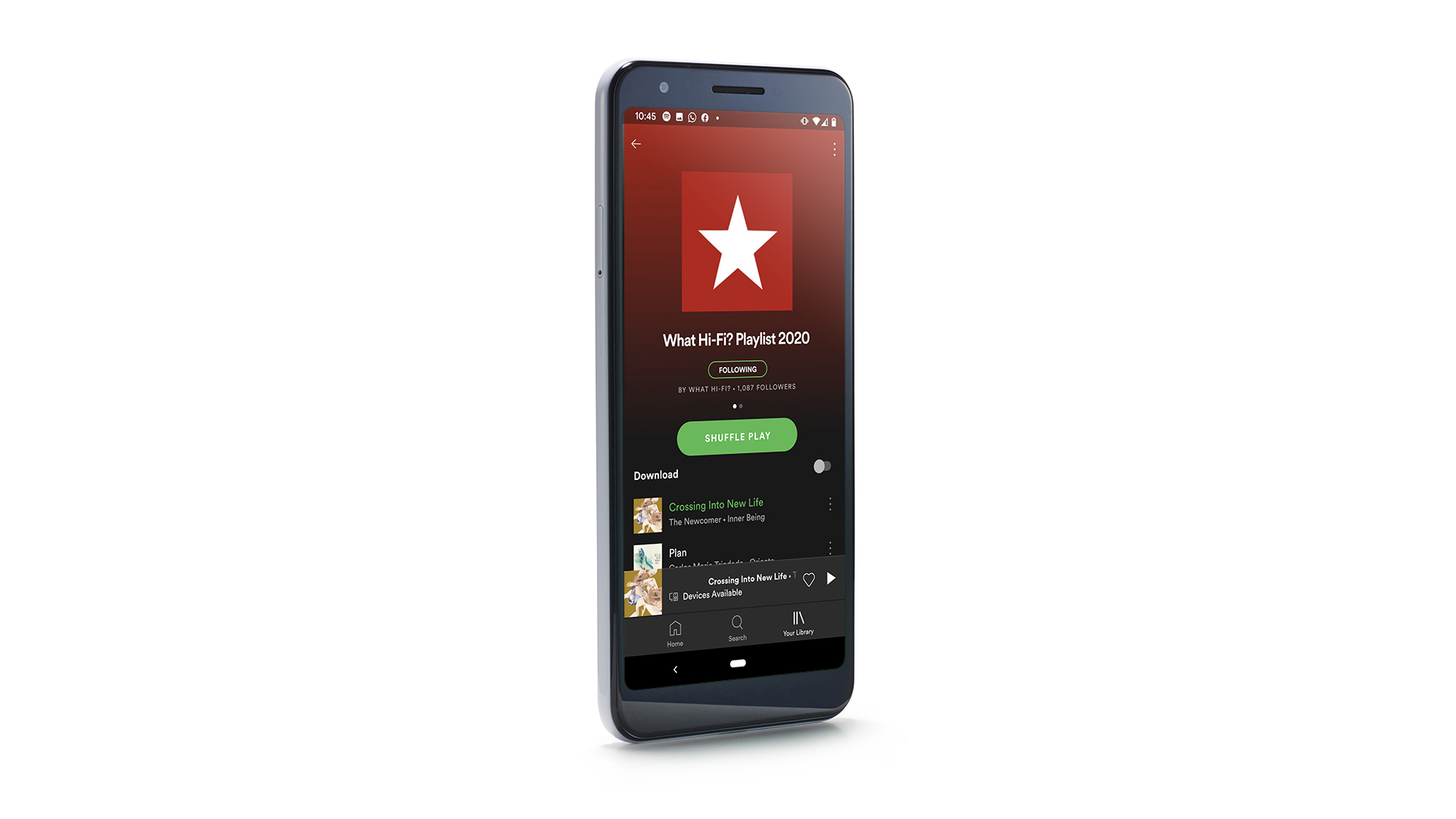
As you’d reasonably expect, Spotify’s free tier isn’t nearly as robust as Premium, but there is still a lot on offer. Of course, the adverts must be tolerated – and they pop up every few songs. Sound quality is capped at 128kbps on its web player and approximately 160kbps on its desktop and mobile apps. Free users can’t ‘download’ songs to listen to offline, nor can they get full control of playback; save for some ‘Pick and Play’ playlists, albums and playlists can only be shuffled. The free service does offer access to most of Spotify’s premium library, though, including the 'Discover Weekly' playlist, one of the real jewels of Spotify's music discovery algorithms.
Unsurprisingly, more folks take advantage of the free tier than the paid-for one – roughly 380 million compared to 246 million – but Spotify’s paying subscribers have grown by around 30 per cent in the past two years and are significantly higher in number than the competition.
There’s plenty to persuade people to go Premium: improved audio quality (approximately 320kbps), offline listening, the freedom to search and skip tracks on all platforms and, of course, no adverts. Spotify Connect, which allows Premium subscribers to cast the catalogue directly to the vast number of compatible speakers, TVs and audio systems on the market today, remains one of the biggest draws.
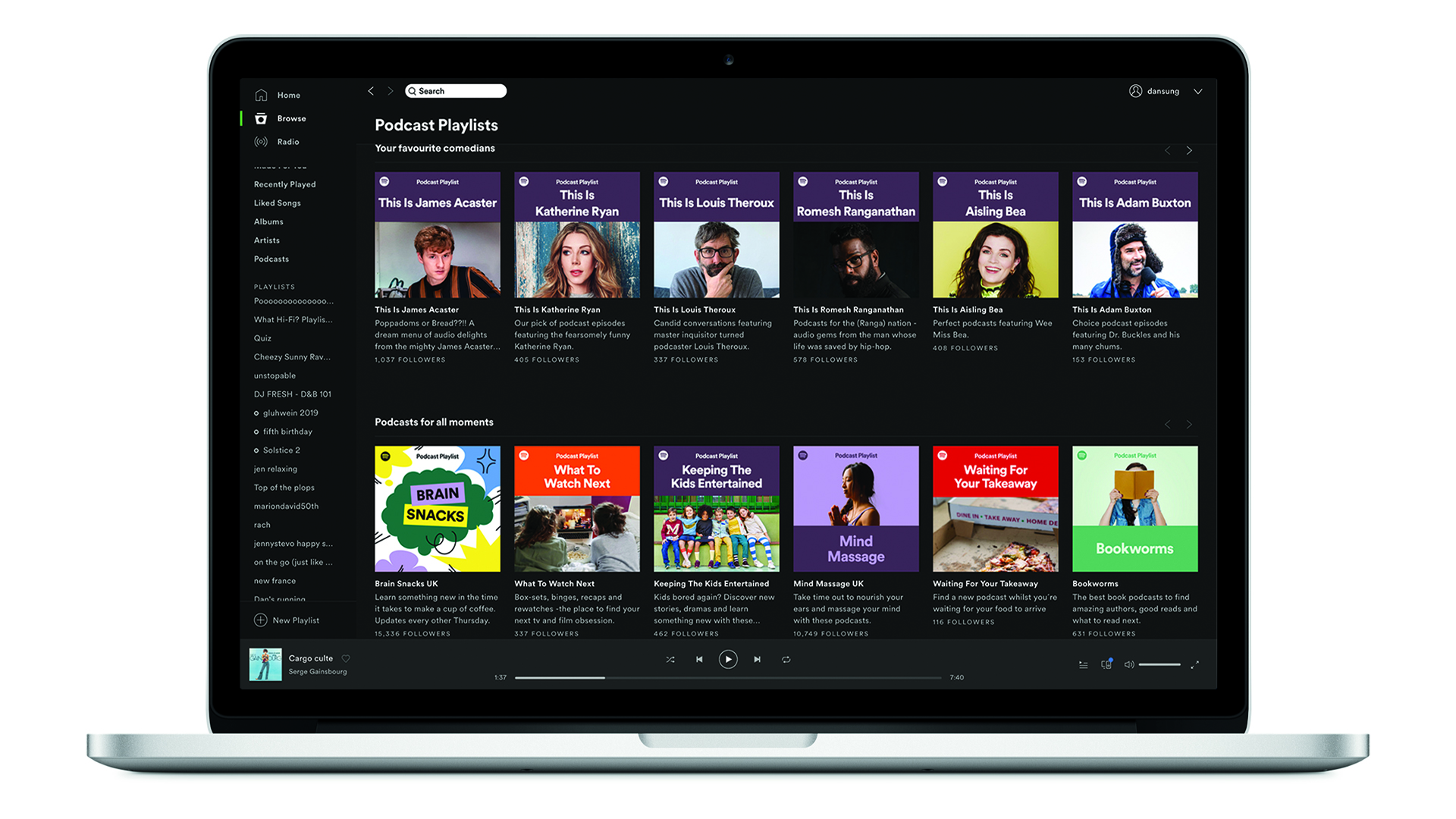
So what does Premium cost? Those who want to get the full Spotify experience have a few options. A standard Premium subscription sets you back £11.99 / $11.99 / AU$13.99 per month, while a student subscription is available for £5.99 / $5.99 / AU$6.99.
Even better value is Spotify Premium Family, which gives Premium access to up to six people (nominally from the same household) for £19.99 / $19.99 / AU$23.99 per month. Spotify Premium Family also provides a ‘Family Mix’ playlist that combines music liked by all users on the plan, plus the option of Spotify Kids accounts, which block out explicit content and serve up a range of audio content aimed at nippers, including singalongs, soundtracks and stories.
The Family tier makes sense if you and at least two others in your household want Spotify subscriptions, however for just you and one other, the latest Premium Duo plan is the best-value option: it gives two people living under one roof Premium accounts for £16.99 / $16.99 / AU$19.99. Spotify also creates a special playlist here (‘Duo Mix’) combining music drawn from the tastes of both users.
Spotify prices remained static for a long time, but mounting legislative and market pressures have caused them to increase multiple times in recent years across various markets internationally. Spotify’s paid-for subscriptions are therefore, by and large, more expensive than those of its closest competitors. For example, Apple Music, Amazon Music and Tidal charge £10.99 / $10.99 / AU$12.99 per month for their Individual plans, with their Family plans similarly undercutting Spotify’s – and that is for higher audio quality, remember.
Features & ease of use
Spotify’s intuitive interface hasn’t strayed too far from its familiar design – ‘if it ain’t broke…' – although layout changes have been made to accommodate new features, and modern touches, such as adding videos, animated graphics and lyrics to playback screens where possible, have made the experience all that more fresh and involving. The desktop app has been brought in line with the mobile version, too.
The Search section complements that all-important search bar with shortcuts to ‘Music’, ‘Podcasts’, ‘Audiobooks’ and (local) ‘Live Events’ suggestions, as well as more granular shortcuts based on music genre (‘Indie’), your current activity (‘Cooking & Dining’) and popular Spotify curations (‘Podcast Charts’).
But for more familiar listening, the Home page is where you'll find your current favourites and most played, as well as assorted, algorithm-led ‘For You’ curations based on your listening habits. Whereas Spotify (and other services) once primarily used their algorithms to suggest specific tracks or albums, algorithmic recommendations have evolved to increasingly take the form of mixes and artist ‘radio’ stations. The latter isn’t, however, a patch on Apple 1 (formerly Beats 1), Apple Music’s live 24/7 global ‘youth-orientated’ station – which isn’t surprising considering the resources Apple has put into securing DJ presenters such as Zane Lowe and celebrity guest appearances. It is varied, unique and comprehensive, and ultimately one defeat Spotify has to take on the chin.
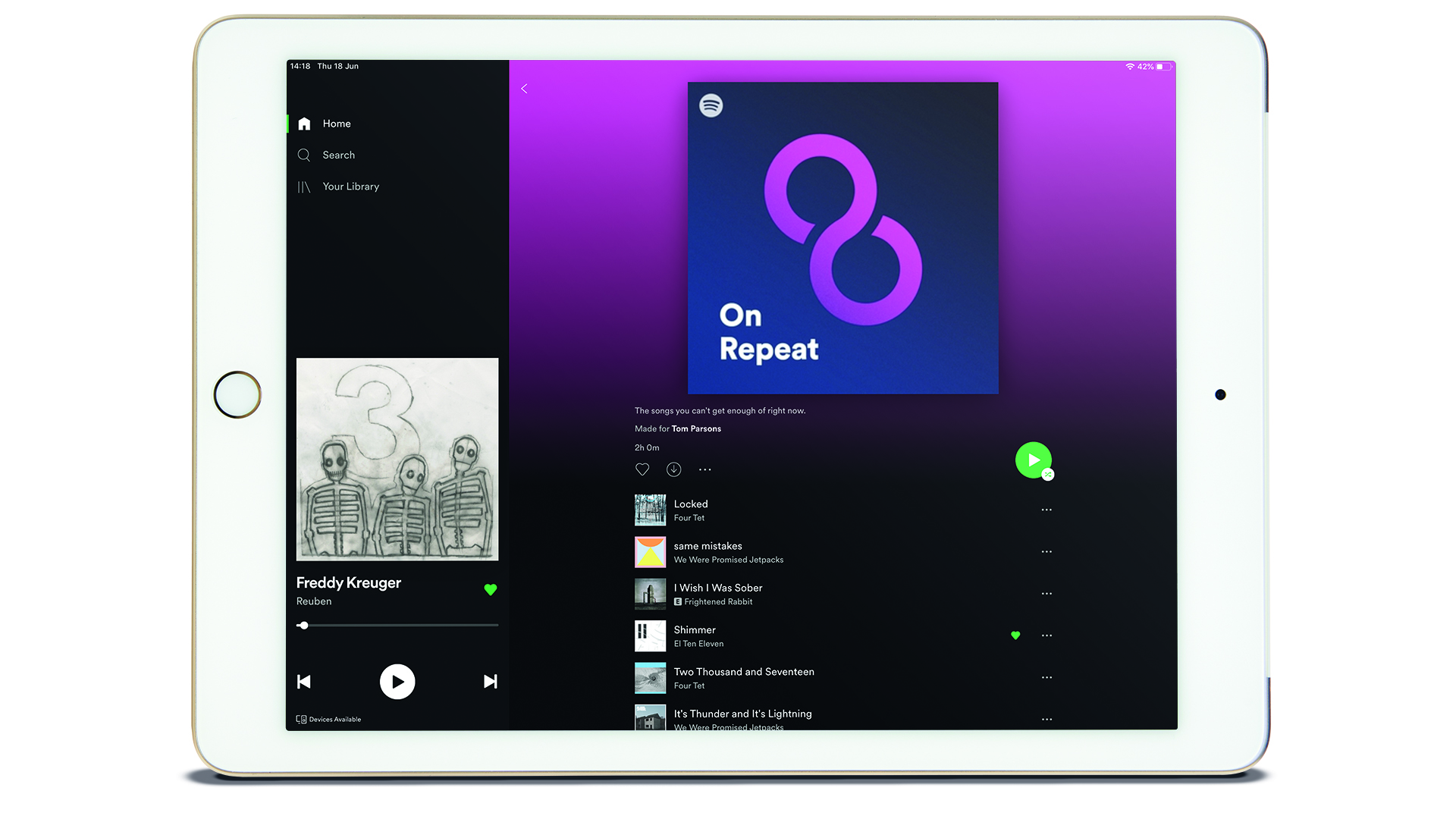
The service’s various music discovery mixes – headlined still by the ‘Discover Weekly’ and ‘Release Radar’ mixtapes – are at the forefront of Spotify’s innovation and arguably where the service still edges ahead of its rivals, which are making huge efforts to catch up. Generally, such playlists are pretty spot-on, a good mix of both old and new, and even include new remixes of songs from artists you have listened to. The more we listen, the more they evolve… and the more we discover, the more we thank our lucky stars that such algorithmic ingenuity has advanced since Spotify’s pioneering efforts. Again, Spotify’s ‘Wrapped’, which every December invites users to view a montage of data about their year’s listening activity and share it on social media, is another of the service’s masterstrokes in the streaming space.
For Premium subscribers, downloading albums and playlists for offline listening is easily done by tapping the downward-pointing white arrow on the top left of the library screen. The files are then saved in the 'Downloaded' tab of 'Your Library', which is also where you’ll see your ‘Liked Songs’ and recently played artists, albums and podcasts.
If you'd like to use the Spotify desktop app to playback local files stored on your computer, then you can set them in the app preferences to show in here, too.
Ultimately, Spotify has it all in terms of accessibility, ease of use and catalogue (audio quality aside). It’s little wonder that many competitors have come and gone in the 16 years Spotify has been around, but even those alive and kicking high today don’t quite match Spotify’s level of completeness.
Sound
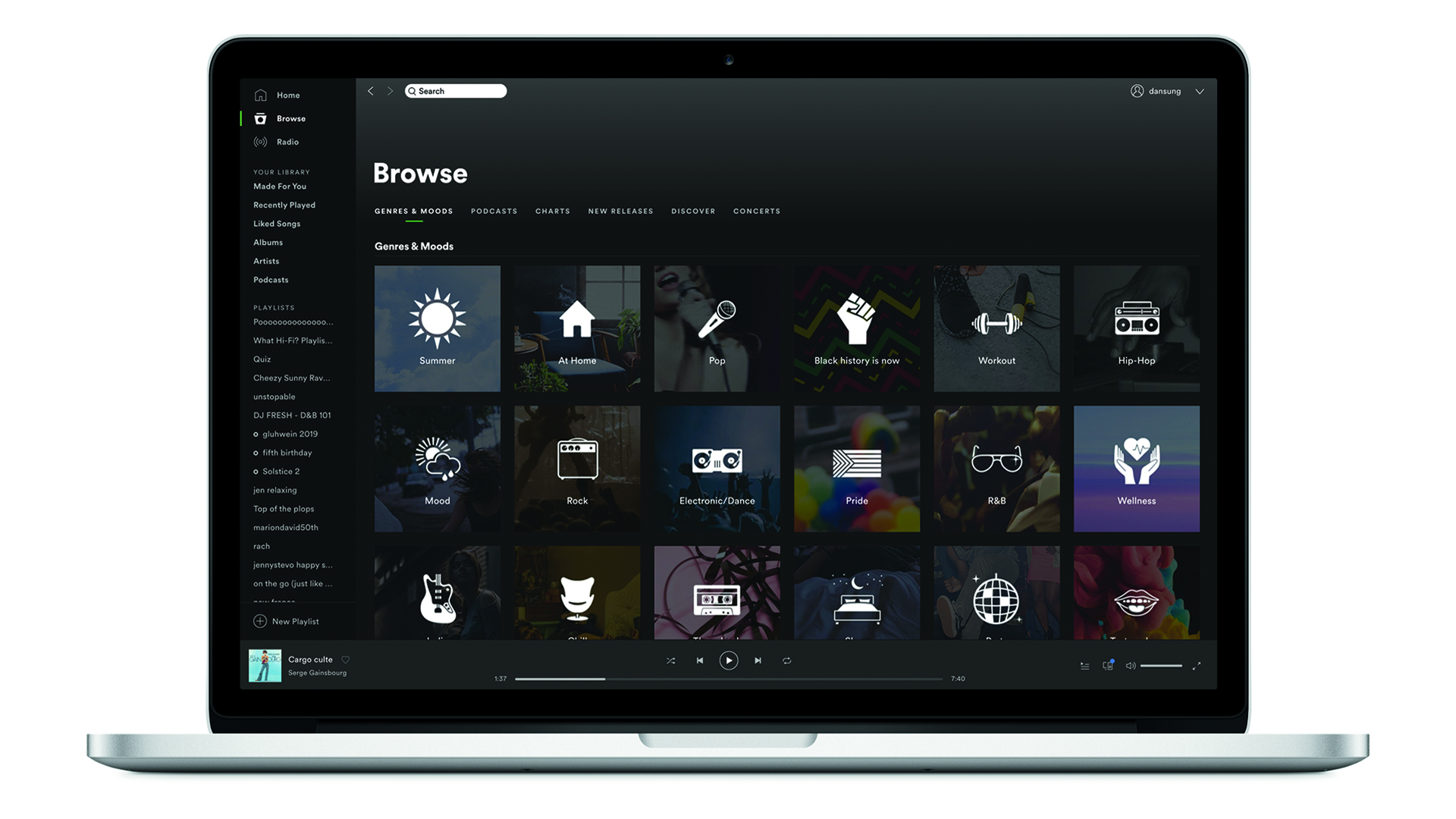
The elephant in this particular review is the four-star badge attached to it, but the reason for that greyed-out fifth star is simple: Spotify falls behind most of its competitors for sound quality.
Since as far back as 2017, there have been rumours that Spotify will get a higher-quality music tier called Spotify HiFi, which, at the beginning of 2021, was finally announced by the green giant due to launch later that year. But that self-imposed deadline came and went without any fanfare, and here we are three years later without so much as a snuff of increased quality. Our Spotify Hi-Fi preview page details the journey and current state of play around its launch, but at the time of writing the latest news is that, according to Ek, "higher quality" Spotify is "in early days".
Indeed, better sound quality remains the most logical next step for Spotify. The rest of the competition has already gotten its act together with Apple Music, Amazon Music, Tidal, Qobuz and Deezer all offering streams in ‘lossless’ CD quality (and hi-res in all cases but Deezer) for less than the price as Spotify’s significantly lower-quality streaming.
Spotify’s streams max out at a quality ‘approximately equivalent to’ 320kbps, so long as you select ‘Very high’ streaming quality in the app preferences (not available on the web player). If you’re concerned about the ‘approximate’ caveats regarding Spotify’s audio quality, don’t be; it comes down to codecs more than it does lower-than-expected-quality music. Spotify’s web player, for example, supports 256kbps AAC, while the ‘approximately equivalent to 320kbps’ quality can be achieved on desktop and mobile, the speculation being that Spotify’s non-browser playback relies on a different codec from AAC (like MP3, or Ogg Vorbis – an open-source alternative to MP3 that Spotify has used). Generally, a 256kbps AAC stream will be very similar in quality to a 320kbps MP3.
So how does that translate to actually listening? It’s fair to say that Spotify offers a reasonably clear, forward and tonally balanced presentation that’s easy on the ears. Hit play on one of the many playlists you’re served on the Home screen, and you’re likely to enjoy what you hear through everyday wireless earbuds. Unlistenable, Spotify is not.
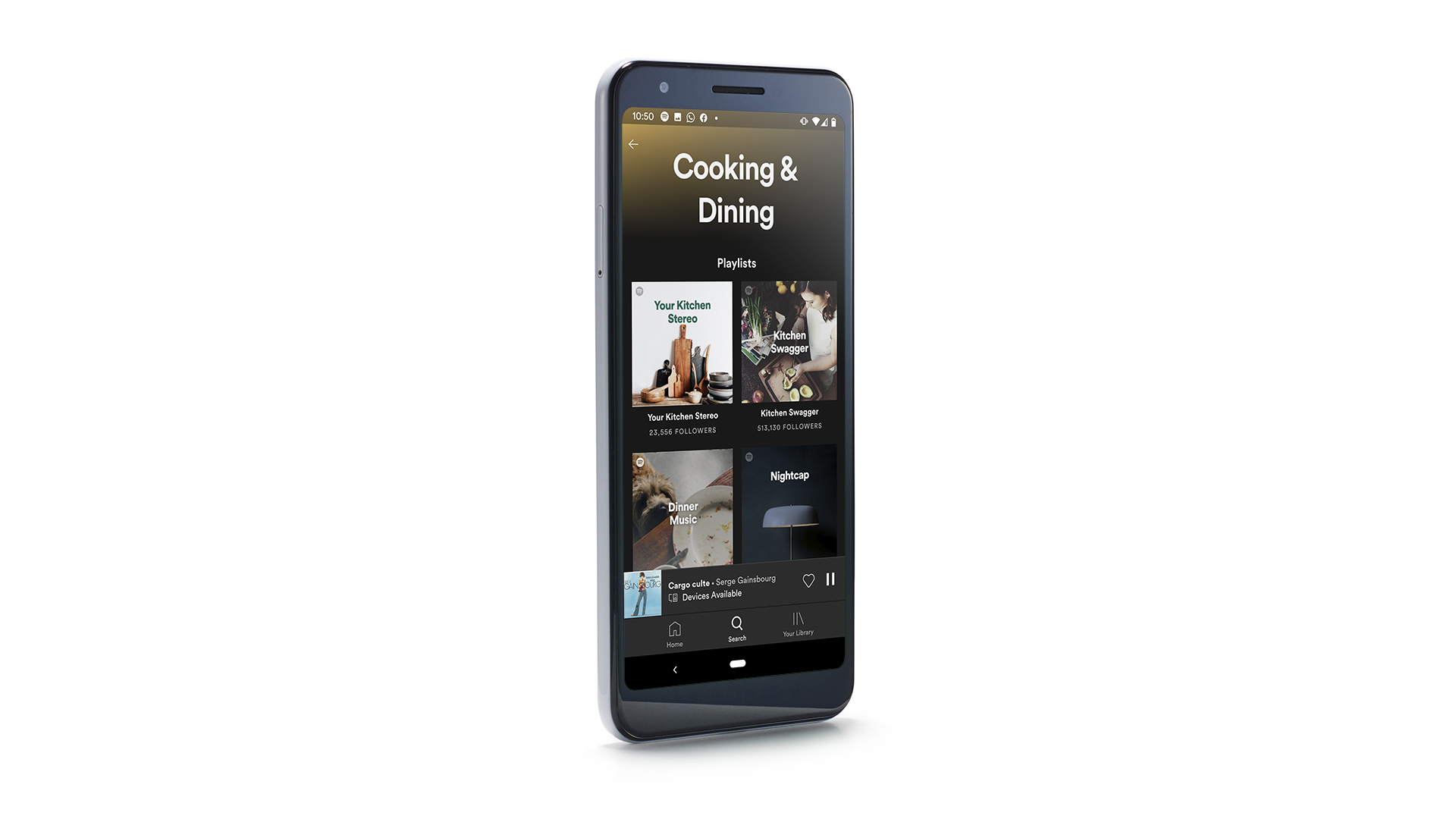
But the shortcomings manifest when you listen through kit that is more sonically revealing – affordable wired headphones at the modest end of the spectrum, decent audio systems at the other – and realise that the grass is certainly greener on the other side. We play the same albums through both Spotify and our favourite streaming service, Tidal, and the latter’s presentation conveys details and textures that simply aren’t palpable in the Spotify streams. There’s greater refinement, more space between instruments and much more going on dynamically, making the Tidal streams more involving.
Such discrepancies were notable even through a phone and premium wireless headphone pairing, and expectedly more so as we moved up through the equipment ranks with varying calibres of wired headphones with DACs, and wireless speakers. Through a hi-fi system, the gap between renditions will be wider than ever.
Verdict
It’s easy to see why Spotify remains the mass market choice: aside from its deserved reputation and unrivalled marketing, its recent forays into podcasting, audiobooks and concerts have expanded its influence beyond recorded music, it just about continues to lead the way in music discovery, curation and catalogue depth, and, crucially, it offers an accessible-to-all free tier.
There’s room for improvement and reasons why you might look elsewhere: some features and functions offered by other services may appeal to you, while questions around artist pay-outs and other political reasons that have cropped up in recent years may well push you elsewhere. But for us, the big issue lies with sound quality and value. Considering several competitors now offer higher-quality streams (comparable to Tidal’s), and for a slightly lower monthly fee than Spotify, we’re no longer willing to throw the world’s most popular streaming service a bone in light of their music discovery and catalogue edging its rivals.
When – or if – Spotify finally steps up to lossless or hi-res quality, we will revisit this review with eagerness. For now, it falls behind the sound-prioritising pack.
SCORES
- Sound 3
- Features 5
- Ease of use 5
MORE:
How to cancel Spotify Premium – and should you?
33 Spotify tips, tricks and features
Here's our rundown of the best music streaming services available right now
Tidal vs Spotify: which streaming service is better?
What Hi-Fi?, founded in 1976, is the world's leading independent guide to buying and owning hi-fi and home entertainment products. Our comprehensive tests help you buy the very best for your money, with our advice sections giving you step-by-step information on how to get even more from your music and movies. Everything is tested by our dedicated team of in-house reviewers in our custom-built test rooms in London, Reading and Bath. Our coveted five-star rating and Awards are recognised all over the world as the ultimate seal of approval, so you can buy with absolute confidence.
-
tryingtothink Regrettably Spotify have not set it up so that Siri can be used on HomePods. Apple has made it now so that this could be done and indeed Spotify have enabled it on iPhone and watch. We live in hope but a thread on the Spotify community with over 1800 votes is attracting no response from Spotify.Reply -
Neiljbp Replytryingtothink said:Regrettably Spotify have not set it up so that Siri can be used on HomePods. Apple has made it now so that this could be done and indeed Spotify have enabled it on iPhone and watch. We live in hope but a thread on the Spotify community with over 1800 votes is attracting no response from Spotify.
In the old days we simply listened to the music.
It was really easy.
Some folk seem more interested in the mechanics of the thing. Ah well.
I just listen to the music.
It's really easy.
I'm not interested in how may things I can carry around when leaving the house, how may things I can press or swipe or look at or talk about or show off with.
I just listen to the music.
It's really easy. -
Neiljbp Mod Edit: Removed a quoted spam link.Reply
Does that mean that you use Spotify without feeling the need to pay for it.
If that is so, it is very fortunate for you that you were not born in the 60's etc.
Why do folk feel that music should be free.
If you do pay, I take it back, but I believe gratis means free. -
teschall I believe Spotify pays artists less per stream than the other music streaming services. This might be an important factor to mention to those trying to decide which service to use.Reply -
jjbomber Reply
Spotify pat the recording artist and composers separately. The total paid is very similar.teschall said:I believe Spotify pays artists less per stream than the other music streaming services. This might be an important factor to mention to those trying to decide which service to use.
